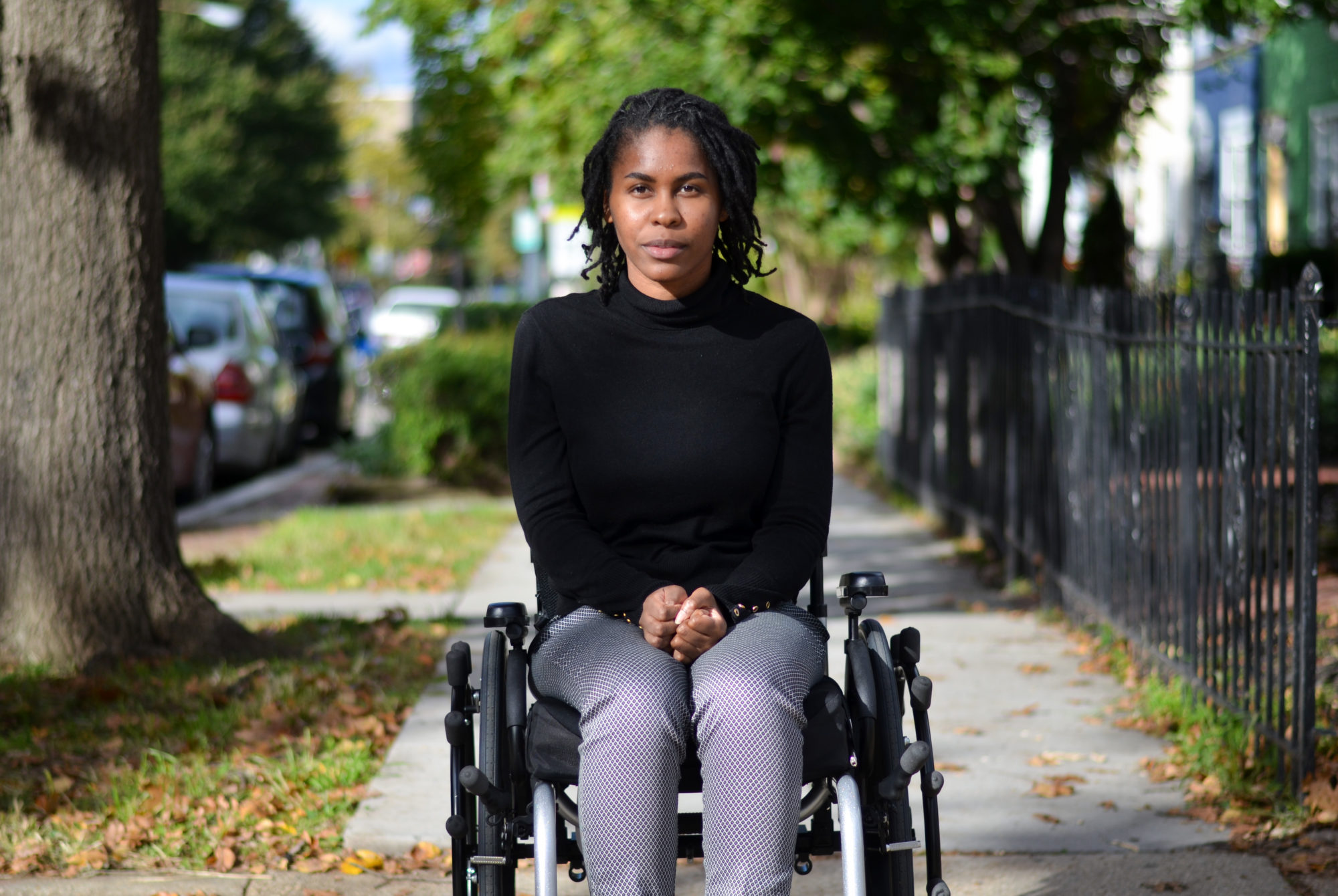Originally published in the GW Hatchet by Savita Govind on October 29, 2018.
Three years ago, Tyree Brown could be found stationed in front of a huge canvas taller than her, with her arms stretched out high depicting a subject using a graphite pencil.
But after a car accident rendered her quadriplegic in 2015 – two years into her studies at the Corcoran School of the Arts and Design – Brown now works on 8-by-10-inch canvases, clutching her pencil and moving her left hand slowly to keep it steady.
Brown, who graduated in the spring with an associate’s degree in fine arts, specializes in charcoal and graphite mediums to create portraits and sketches. She could previously complete detailed drawings in about five days, but now spends between two weeks and a month finishing work with her non-dominant left hand.
Because her paralysis includes full or partial loss of function in all four of her limbs, she could barely write her name with her left hand in the months after her accident. But through occupational therapy, she trained herself to be able to function enough to continue pursuing art.
Before her injury, Brown said she “had the ability to do everything” she wanted in her art, but now with some limitations, she has found a more defined focus.
“I have to see detail and just the smallest things within that need to be done in my art that I didn’t see before,” she said.
When deciding which subjects and concepts to depict, Brown said she is drawn to recreating snapshots of life on the page, taking in light and shadows to produce monochromatic portraits. She portrays her family frequently, along with people she finds on social media or in her daily life.
“I like style,” she said. “If I see something that deals with fashion or just a really nice pose and someone’s looking at the camera very stylistically or fashionable. I like the modernness of people and how they look.”
Initially frustrated with having to slowly improve her artistic abilities, she said she built up her technique from sketchpad scribbles to detailed portraiture, regardless of the extra time spent improving her “mark making,” or drawing lines, dots and shapes on the page.
“I started to draw with mark making and then finally told myself I need to do this, better mark making with the ability I do have, and it just improved,” Brown said. “Once I realized, with the ability I do have, how I can go about drawing, it no longer frustrates me as much than it did in the beginning of my injury.”
A collection of eight portraits focused on social media personalities featured one work inspired by the motivating comments and recognition Brown received online from an unnamed fan, she said.
After the fan commented on one of Brown’s social media posts, praising her faith and commitment to her art after her accident, Brown said she felt inspired to create a portrait of him.
“It’s things like that that people do, even on social media, that they say, ‘Wow this encourages me,’” Brown said. “So along with my family supporting me and things that people say on social media that encourage me, that really helps to support me.”
Brown plans to continue working on a series of self portraits as she begins to shop around for galleries to showcase her recent work. She hopes to experiment with different mediums beyond graphite, creating more charcoal pieces while also dipping back to her painting skills.
Brown has also begun work with a disabilities vocational rehabilitation program to find a career path that suits her best, with goals of becoming a teacher or an assistant teacher who critiques and supports others in drawing or painting.
Brown’s schooling prepped her to pursue art in the professional world, she said. One of her favorite class projects, “Meaning,” which she created in a second-year fine arts core class, was presented in a student gallery space, where her work was critiqued.
Deree Cox, Brown’s mother, said she always supported her daughter’s love of art, but didn’t realize it was something she could pursue professionally. Now she is one of Brown’s biggest supporters, driving her around when art showings and events are not wheelchair accessible.
“I’m gonna be there to take her,” Cox said. “That’s what mothers do.”
Both Cox and Brown said religion played a large part in seeing through the task of relearning her art skills. Cox said that through faith and her daughter’s God-given talent, Brown was able to accomplish something that “no professor” could teach her.
“Not even now can she open and close her hand like we can,” Cox said. “She can’t say ‘hi’ like we can, but if we put that pen in her fingers, then she goes.”
Brown said she hopes her own experiences inspire other artists to persevere through obstacles and remain hopeful.
“Art is not just something that I can do. It’s something that’s a part of my life now,” Brown said. “I can draw no matter if I’m injured or not.”
Isabella Brodt contributed reporting.


